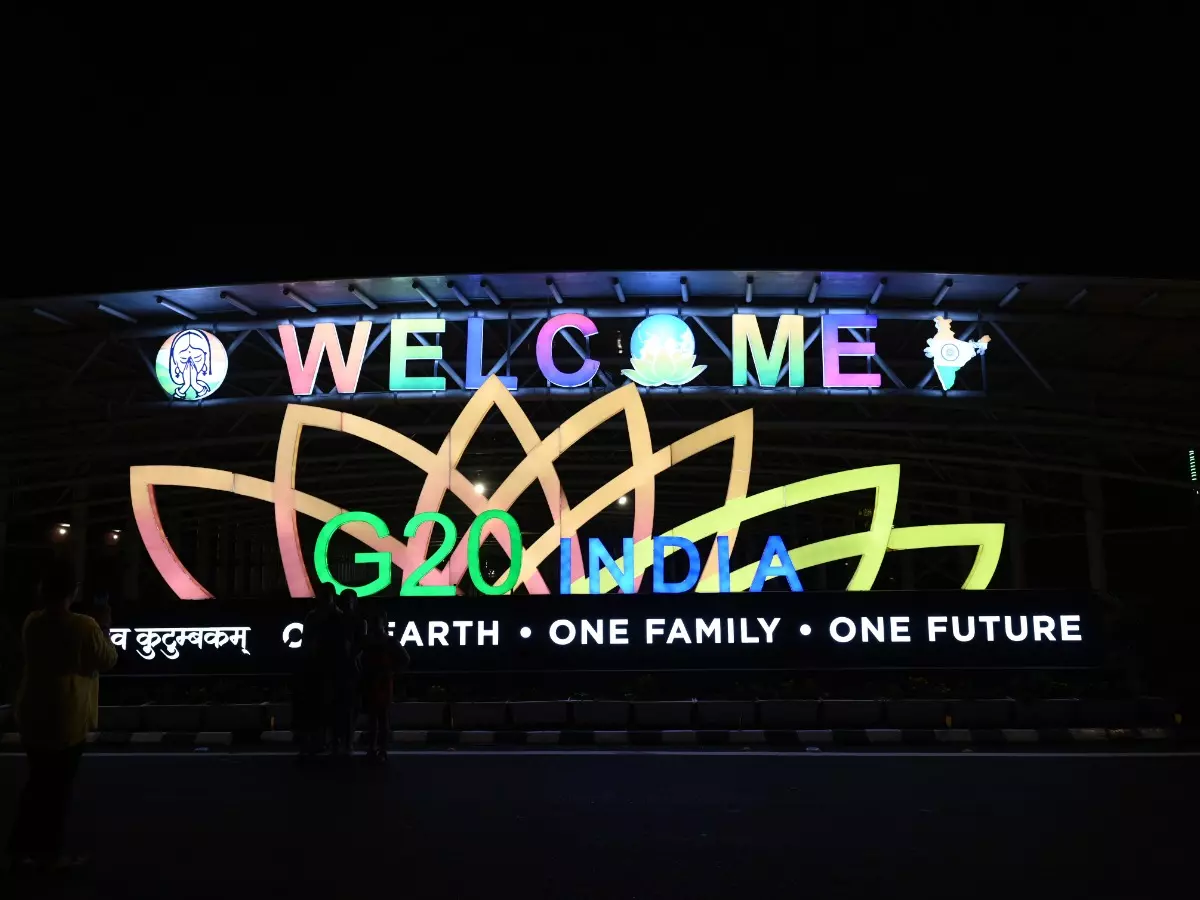India¡¯s G20 Year And The Shape Of Things To Come
The year 2023, more than anything else, has been one of India¡¯s G20 presidency and its pursuit of inclusive multilateralism in an uncertain and divided world. The successful conclusion of India¡¯s G20 presidency and its ability to stitch together a consensus, bridging the concerns of the Global North and Global South aligns with its self-projected stature of a ¡°Vishwamitra¡± (a friend to the world). Nevertheless, India¡¯s aspiration for ¡°Vasudhaiva ...Read More

The year 2023, more than anything else, has been one of India¡¯s G20 presidency and its pursuit of inclusive multilateralism in an uncertain and divided world. The successful conclusion of India¡¯s G20 presidency and its ability to stitch together a consensus, bridging the concerns of the Global North and Global South aligns with its self-projected stature of a ¡°Vishwamitra¡± (a friend to the world). Nevertheless, India¡¯s aspiration for ¡°Vasudhaiva Kutumbakam¡± (the world is one family) plays out amidst the sobering reality of global geopolitics and conflicts ravaging the world from Europe to West Asia.
 AFP
AFP
Steering Strong Geopolitical Currents
The war in Ukraine imposes limitations on India¡¯s ties with Moscow, at a time when the India-U.S. partnership is burgeoning and becoming more comprehensive. Despite distractions such as the case of Gurpatwant Singh Pannun, the India-U.S. relationship has struck all the right chords and remains the most consequential partnership for New Delhi. The successful conclusion of the ¡®2+2¡¯ dialogue between the Foreign and Defence Ministries, Prime Narendra Modi¡¯s state visit to the U.S. and President Joe Biden¡¯s India visit during the G20 summit testify strong political support and deeper institutional linkages. As the year came to an end, India¡¯s Foreign Minister S. Jaishankar landed in Moscow for a series of meetings reaffirming a healthy India-Russia relationship despite geopolitical currents pushing ahead a Sino-Russian strategic embrace, causing a wider U.S.-Russia chasm, and a growing U.S.-China great power rivalry. Simultaneously, Beijing¡¯s aggressive behaviour and intransigent attitude at the India-China border has derailed any sort of understanding with New Delhi. The China challenge is comprehensive cutting across the strategic rivalry and the border question, and many other threats hovering at low intensity below the threshold of inter-state dynamics.
 AFP
AFP
A reliable partnership to vouch for will be the one with France, as President Emmanuel Macron is all set to visit New Delhi as the Chief Guest of India¡¯s Republic Day Celebrations in early 2024. Prime Minister Modi¡¯s earlier visit to France in 2023, envisioned a partnership spanning both military and non-military affairs, backed by a solid history of pragmatic engagement sans undue expectations. India¡¯s immediate neighbourhood continues to be a concoction of challenges and opportunities. The election in Maldives has yet again exposed the seesaw of political forces in the neighbourhood hedging their bets between a distant China and a proximate India. The upcoming election in Bangladesh is a consequential one for the continuity of the positive arc that New Delhi and Dhaka have managed to maintain for regional connectivity and growth. The evolving crisis in Myanmar will be one of high consequence in the year ahead, as it will directly affect not only the broader South-Southeast Asia corridor but also the politico-security and socio-economic situation in Indian border-states like Manipur and Mizoram. Moreover, the Israel-Hamas war and the humanitarian crisis has upended new power alignments in the region, and caused an upheaval in the Arab world¡¯s ties with Israel, posing new questions for New Delhi¡¯s West Asia strategy.
A Voice of Inclusiveness in a World Adrift
To vouch for inclusiveness in a world replete with power asymmetries and differing national interests, is not a walk in the park, but it will continue to be inevitable and worth pursuing. India¡¯s focal point of vision and implementation through its G20 presidency has been inclusive multilateralism in times of growing multipolarity. World politics is a tightrope walking to align the goals and purposes of diverse multilateral platforms of varying groups, to negotiate the outcomes for a more effective global governance. India is a primary member of many such consequential groupings besides the G20, such as the BRICS and the Quad, or has growing coordination with ones such as the G7.
 G20
G20
How New Delhi navigates through these intricate webs of interdependences, to promote and protect its own national interest without losing sight of the greater good will be the test of fire for India¡¯s foreign policy in the year ahead. As India projects its benign leadership of the Global South and builds new webs of cooperation with the Global North, the governance of new technologies, their uses in the military domain as well for civilian/commercial consumption will become a primary task for consensus building. Moreover, India has to build global habits of cooperation in the drive for transition towards greener economy as the blueprint of future development, while keeping the needs and requirements of the Global South for access to uninterrupted supply of energy.
As New Delhi reflects on a year of diplomatic highs achieved during its G20 presidency and its growing stature at the global stage, it needs to find ways to temper the impact of geopolitical forces closer home and the ones distant yet with high consequences. Engaging more comprehensively with like-minded partners, to negotiate more effectively with differing voices for an inclusive multilateral dealing of global governance will determine the rise of India as a ¡°vishwaguru¡± and ¡°vishwamitra¡±.
*The Author is a New Delhi based Strategic Analyst and the Honorary Director of the Kalinga Institute of Indo-Pacific Studies. He is a regular commentator on International Affairs and Indian Foreign Policy.
